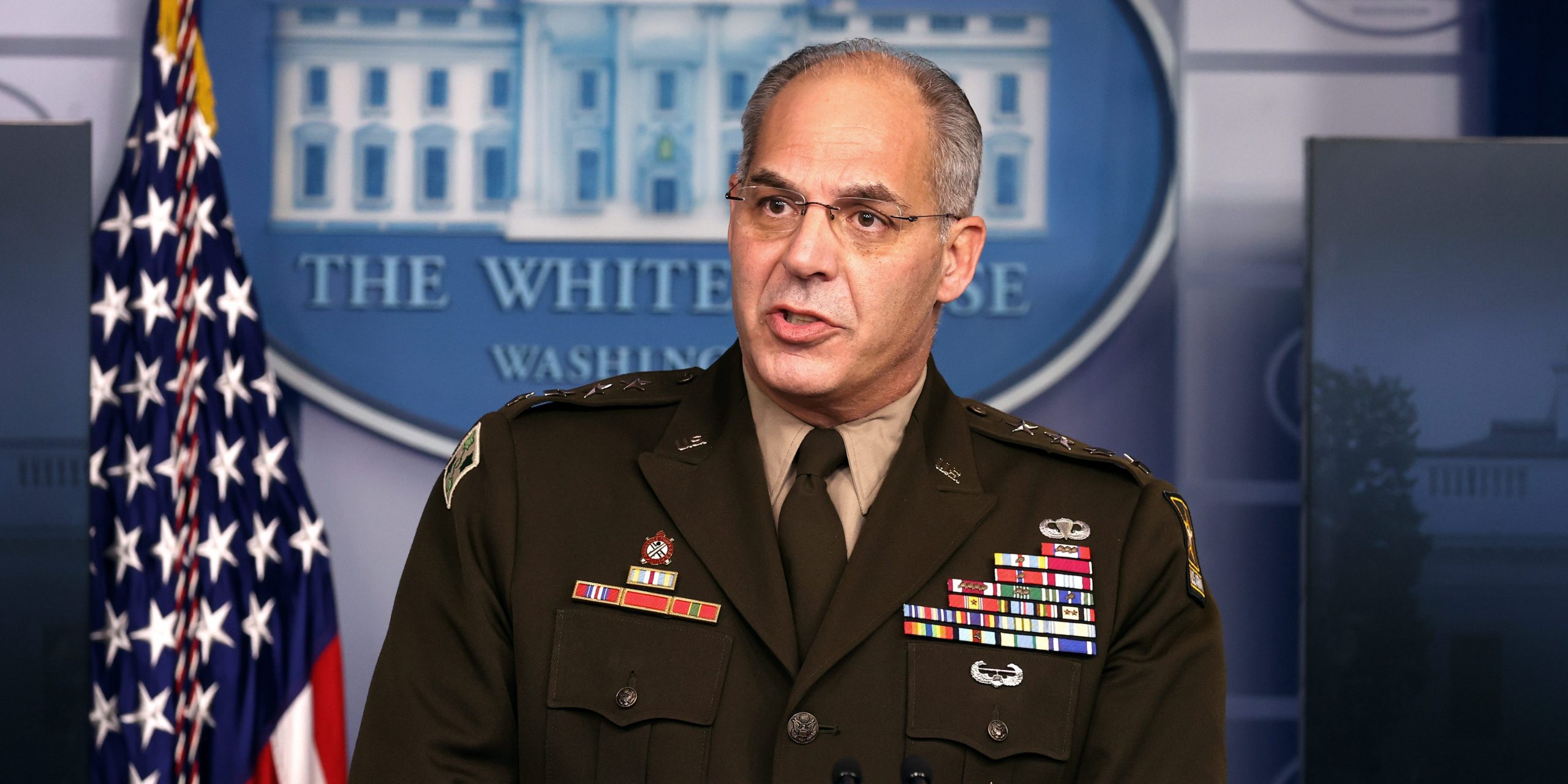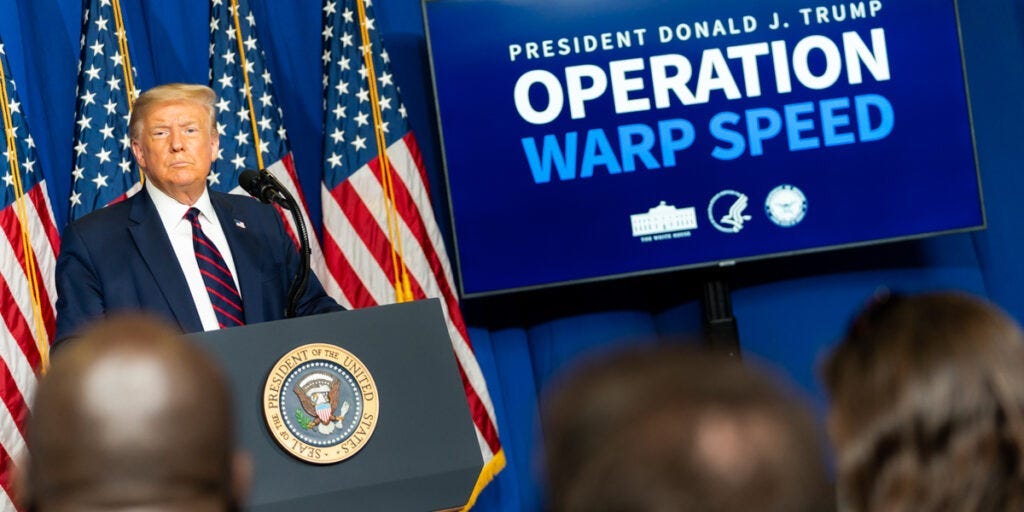
Tasos Katopodis/Getty Images
- General Gustave Perna, chief operating officer of Operation Warp Speed, apologized Saturday for a “planning error” that caused dozens of states to expect more vaccine doses than they’ll actually get.
- More than two dozens states have said they will receive 30% to 40% fewer doses of Pfizer’s vaccine next week than they were expecting.
- Perna said that was a result of estimates he gave for planning purposes that wound up being incorrect.
- “I failed,” Perna said. “I am adjusting, I am fixing, and we will move forward from there.”
- Warp Speed is set to deliver 7.9 million doses next week to more than 3,700 sites across the country.
- Visit Business Insider’s homepage for more stories.
The co-leader of the US government’s coronavirus vaccine initiative claimed personal responsibility on Saturday for widespread confusion among state leaders about how many coronavirus vaccine doses they will receive.
Over the past couple of days, more than two dozen states have said they are getting 30% or 40% fewer doses of Pfizer’s COVID-19 shot next week than they were expecting. General Gustave Perna, Operation Warp Speed’s chief operating officer, said the miscommunication was his fault. Supply estimates he previously gave to states for planning turned out to be incorrect, Perna said.
“To the governors, to the governors’ staffs, please accept my personal apology if this was disruptive in your decision-making and in your conversations with the people of your great state,” Perna said at a press conference.
The four-star general expressed confidence in the vaccination campaign overall, however. Even with the number adjustments, Warp Speed will ship 7.9 million vaccine doses next week, with deliveries starting Monday at more than 3,700 sites across the country.
“There is no problem with the process, there is no problem with the Pfizer vaccine, there is no problem with the Moderna vaccine,” Perna said. “It was a planning error, and I am responsible.”
"I failed," he later added. "I am adjusting, I am fixing, and we will move forward from there."
Moderna's vaccine became the second authorized COVID-19 shot in the US on Friday. Pfizer's vaccine secured an emergency green light on December 11, allowing Warp Speed to deliver 2.9 million doses to states in the last week.
Warp Speed walks back its delivery goals again

Shealah Craighead, White House
The recent confusion about states' supply estimates and timelines mainly stems from the complexity of the manufacturing process.
Even when vaccine doses are manufactured and ready to be shipped, they still need to meet quality-control requirements before being released. Perna said the inflated estimates he gave states were a result of his own misunderstanding of the difference between doses manufactured and doses ready to be released.
In his Saturday press conference, Perna also made a slight tweak to Warp Speed's delivery goals for December.
Federal officials had previously said they were on track to give 20 million Americans their first shots before the year's end. (Both vaccines are two-dose regimens - Pfizer's second shot comes after 21 days and Moderna's second dose follows 28 days after the first.) But on Saturday, Perna said that although Warp Speed is on track to allocate 20 million doses to states by the end of December, the distribution of those doses will be pushed into early January.
It's not the first time Warp Speed has failed to meet its own lofty aims. The initiative launched in May with the initial goal of delivering 300 million doses by the end of 2020. Over time, officials have quietly walked that back.
Alex Azar, Secretary of Health and Human Services, said in August that the year-end projection would be lowered to "the high tens of millions of doses" instead of 300 million. Since then, "high tens of millions" has been reduced to 20 million people - less than 10% of the original goal.
Now, it appears Warp Speed may fall slightly short of even that figure. Last week, 2.9 million doses were shipped, and 7.9 million more are set to ship this week. That means the initiative would need to deliver 9.2 million doses in the final week of December, which is unlikely.
Plus, that doesn't account for the time it takes to administer the vaccine; that responsibility falls to state and local leaders.
Warp Speed isn't yet providing data on how many Americans have been vaccinated. Azar said officials are working to set up a public dashboard that conveys real-time information on allocation and immunization decisions, but it's unclear when that will go live.
Despite miscommunications and fluctuating estimates, vaccinations are still set to ramp up
Perna defended Warp Speed's overall achievements on Saturday, noting that the US is only the country that has authorized and is distributing two coronavirus vaccines. Both shots were found to be safe and overwhelmingly effective at preventing symptomatic COVID-19 in late-stage clinical trials.
Despite the supply revisions, Warp Speed is still on track to deliver more than 10 million doses to US states by Christmas Day. Quantities should ramp up week-over-week from there, officials have said, allowing 30 million more Americans to get a shot in January and 50 million more in February.
"It's been just 10 months since we've been on the defense against this virus," Perna said Saturday. "It is time to turn the table."

